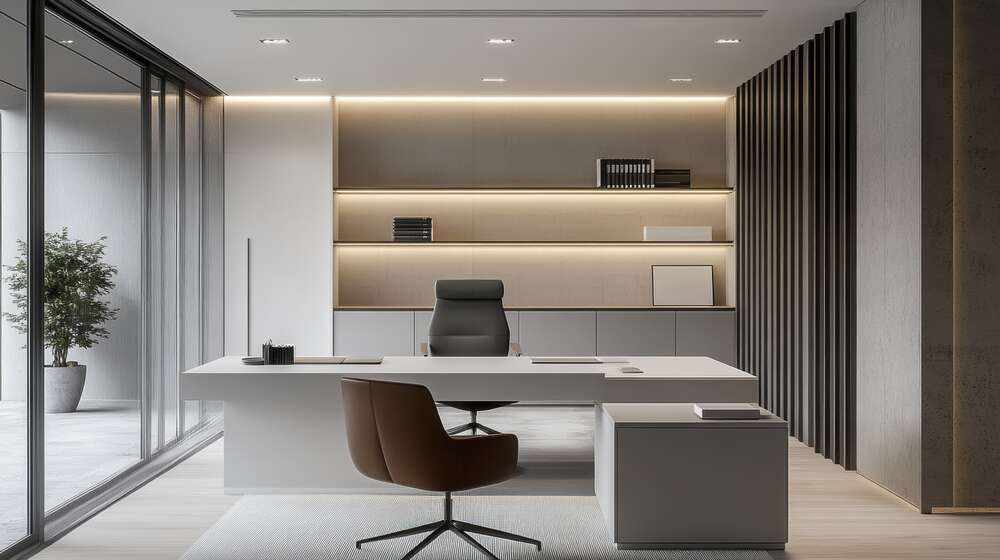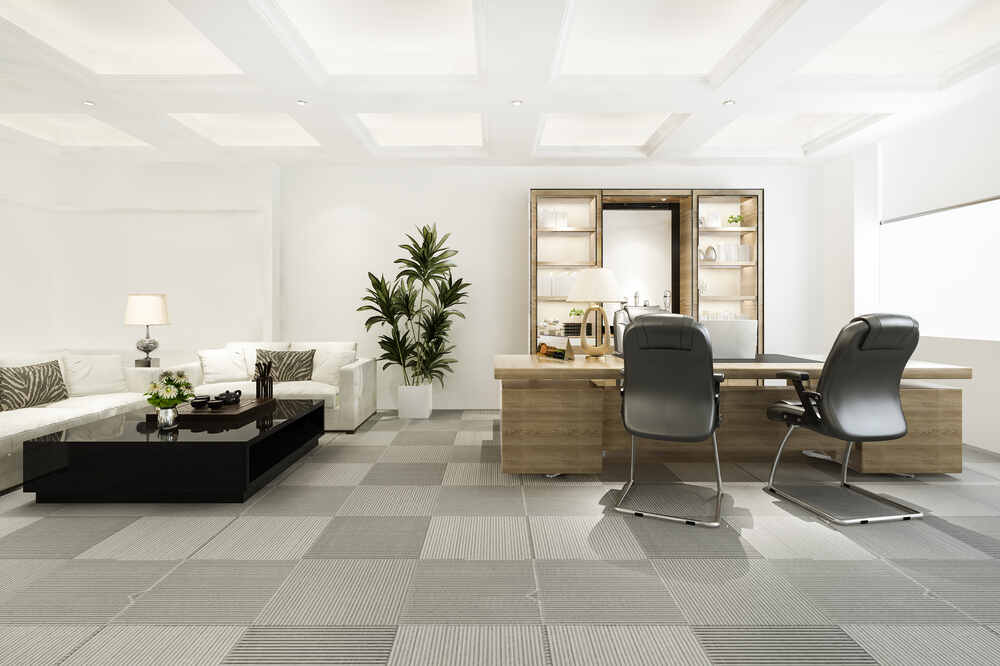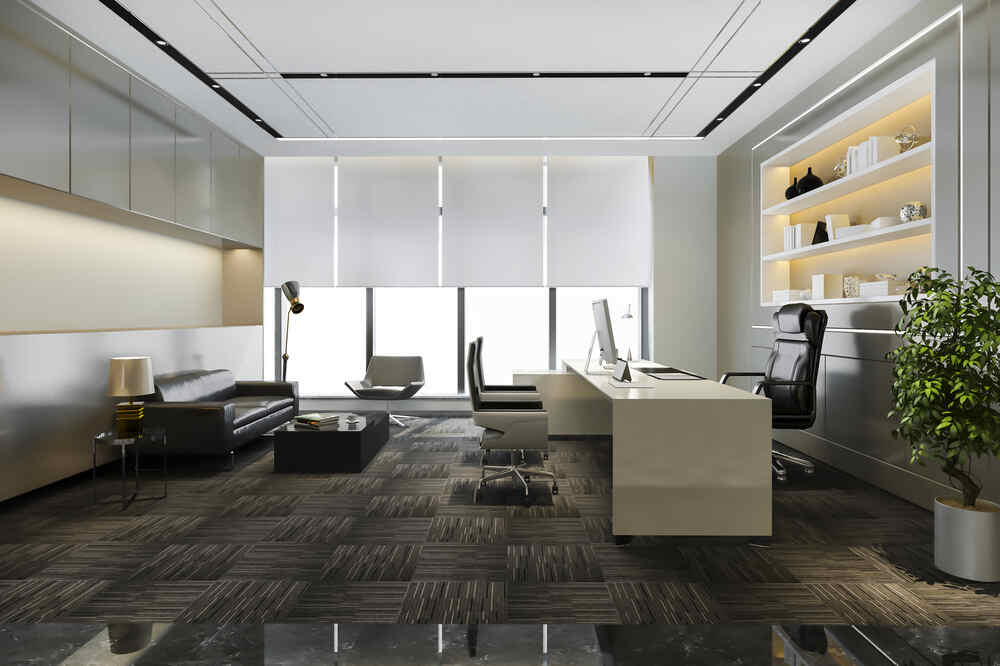
Selecting the right office furniture is essential for creating a productive, comfortable, and professional workspace. The right pieces not only enhance employee well-being but also optimize space, reflect company branding, and support long-term business growth. From ergonomic office chairs to efficient office storage solutions, every choice impacts workflow and efficiency. To make the best decision, it’s important to consider key factors such as functionality, durability, and flexibility.
Here are the essential tips to help you choose the best office furniture for your business.
Key Takeaways✔ Choose office furniture that prioritizes comfort, ergonomics, and functionality to enhance employee productivity and well-being. ✔ Invest in high-quality, durable furniture to ensure long-term use and cost savings. ✔ Optimize space by selecting furniture that fits the layout efficiently while maintaining a clutter-free environment. ✔ Align furniture choices with the company’s brand and aesthetic to create a cohesive and professional workspace. ✔ Balance cost and quality by selecting budget-friendly options that offer long-term value. |

Ensuring employee comfort and support is essential when selecting office furniture. A well-designed workspace enhances productivity, reduces health risks, and promotes efficiency.
A workspace should support the natural movements of the body. Poorly designed furniture can lead to discomfort, fatigue, and long-term health issues.
Work environments change, and adaptable furniture ensures continued efficiency and comfort.
A workspace that prioritizes ergonomics boosts focus and efficiency.
Investing in high-quality office furniture is essential for long-term functionality and comfort. Well-made furniture enhances productivity, ensures employee well-being, and saves costs in the long run. When selecting pieces like an office desk, ergonomic office chairs, or office storage solutions, durability should be a top priority.
Selecting the right materials for modern office furniture impacts both longevity and aesthetics. Durable materials prevent frequent replacements and maintain a professional workspace.
Understanding the warranty and construction of office furniture ensures reliability and cost-effectiveness over time.
Selecting the right office furniture plays a crucial role in creating an efficient and well-organized workspace. Choosing furniture that fits the available space ensures comfort, functionality, and a clutter-free environment. Thoughtfully designed layouts can enhance workflow and productivity while maintaining a professional atmosphere.
Finding the right balance between functionality and space is essential. Oversized furniture can make an office feel cramped, while undersized pieces may not provide enough storage or work surface.
Investing in versatile furniture allows for better space utilization while maintaining a modern and adaptable workspace. Modern office furniture designs often prioritize flexibility, helping businesses adjust to changing needs.
 4. Aesthetic & Brand Alignment
4. Aesthetic & Brand AlignmentCreating a workspace that reflects a company’s identity is essential for a professional and welcoming environment. Office furniture plays a crucial role in shaping the look and feel of an office, influencing both employee morale and client perceptions.
Every business has a unique identity, and office furniture should complement its values and aesthetic. Whether the goal is a modern, minimalist design or a traditional, executive look, selecting the right pieces enhances brand consistency.
A well-planned office space combines style with functionality. Modern office furniture should not only be visually appealing but also practical for everyday use.
Investing in office furniture requires a balance between quality and affordability. While lower-priced options may seem appealing, they can lead to higher costs in the long run due to frequent replacements or repairs.
Choosing furniture based on both price and quality helps create a professional and efficient work environment. The key is to evaluate different factors before making a purchase.
Finding furniture that offers both functionality and durability without exceeding budget constraints requires careful selection.
A well-planned budget ensures a balance between affordability and functionality. Before purchasing office furniture, businesses should consider the following:
The lifespan of office furniture depends on usage, material quality, and maintenance. On average, office chairs should be replaced every 7-10 years, while desks and tables may last 10-15 years with proper care. Filing cabinets, shelving, and storage units can last even longer if well-maintained. Signs that furniture needs replacing include wear and tear, discomfort, instability, and outdated design. Replacing furniture periodically helps maintain a professional image and ensures employees have a comfortable work environment.
Many manufacturers offer customizable office furniture to match specific business needs. Custom options may include size adjustments, color choices, materials, and additional features like built-in storage or power outlets. Businesses can tailor their furniture to fit branding, space requirements, and employee preferences. Customization is particularly beneficial for companies with unique office layouts or those looking to create a distinct aesthetic. While customized furniture may be more expensive than standard options, it ensures an ideal fit for the workplace.
The best way to arrange office furniture depends on the type of work being performed and the available space. Desks should be positioned to maximize natural light and minimize glare on computer screens. Collaborative spaces should have open seating arrangements, while individual workstations need to provide enough privacy. Conference rooms should have a central table surrounded by comfortable chairs, ensuring a productive meeting environment. Storage units and filing cabinets should be placed in easily accessible locations to reduce wasted time searching for documents.
Regular maintenance of office furniture helps extend its lifespan and keeps the workspace looking professional. Wooden furniture should be dusted frequently and polished occasionally to maintain its shine. Upholstered chairs need vacuuming and occasional deep cleaning to remove stains and dirt buildup. Glass furniture requires daily wiping with a microfiber cloth and glass cleaner to prevent smudges and fingerprints. Metal furniture should be wiped with a damp cloth to remove dust and prevent rust, while plastic furniture can be cleaned with mild soap and water.
The most common types of office furniture include desks, chairs, filing cabinets, conference tables, bookshelves, and cubicles. Each piece serves a different function, from providing a workspace to offering storage and organization solutions. Executive desks and workstations are popular for individual work, while collaborative areas often have long tables and ergonomic seating. Reception areas typically feature comfortable seating and desks designed to make a good first impression. Breakrooms also include tables and chairs for employee relaxation.
Expanding your workspace? Stamford Office Furniture is here to provide high-quality, flexible office furniture solutions in White Plains, NY. Whether you need ergonomic office chairs, adaptable office desks, or efficient office storage solutions, we offer modern office furniture designed to support your team’s productivity and comfort. Our expert team in White Plains, NY will help you choose durable, scalable furniture that grows with your business.
Visit Stamford Office Furniture today and create a workspace that works for you—now and in the future.